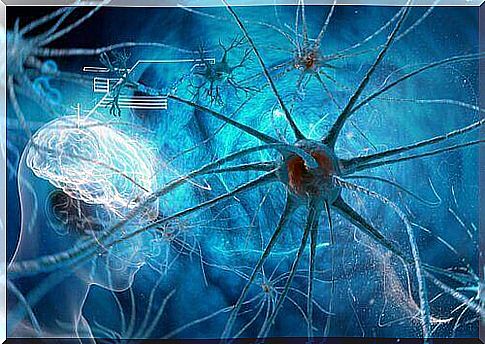Dendrites: A Neuroscientific Revolution

Neuroscience has used various tools for years to try and “listen” to the conversations between neurons. Just as linguists try to decipher foreign languages, scientists try to decipher neuronal patterns. In this regard, it seems that dendrites have become very important in neuroscience.
A recent study has shown that neuroscience has only discovered the tip of the iceberg when it comes to brain capacity.
The University of California Los Angeles (UCLA) discovered a hidden layer of neuronal communication through dendrites. This means that the brain’s capacity could be up to 100 times greater than we previously thought.
This discovery could change the foundation of conventional neuroscience. Until a few months ago, neuroscience was based on the belief that dendrites were primarily passive.
Scientists believed that these neurons only carried electrical signals to the cell nucleus, known as the soma. However, this research showed that dendrites are much more than just passive conductors. They generate electrical signals in peaks that are five times larger and more frequent than those of neurons.

What does this discovery mean?
Among other things, it is possible that learning occurs at the dendrite level rather than at the soma. Conventional neuroscience held that the electrical signals emitted by the cell bodies are the basis of our cognitive abilities. However, now we know that dendrites have no passive function. They also emit their own electrical signals.
Researchers also found that dendrites are intelligent. In other words, they are able to modify their electrical signals over time. Until now, scientists have only observed this kind of plasticity in neuronal bodies. This suggests that dendrites can learn on their own.
Since dendrites are much more active than cell bodies, we can come to surmise that much of the information generated in a neuron is at the level of dendrites. That is, dendrites can act as a unit of calculation and process their information. It’s an independence we didn’t suspect.
The brain capacity
Dr. Mayank R. Mehta’s research team devised a system to place electrodes near the dendrites of rats. This system allows them to pick up electrical signals from the animals during the time they are awake and doing their daily activities, as well as when they are sleeping.
They were able to listen to the electrical activity of dendrites for four consecutive days. The scientists implanted the electrodes in the posterior parietal cortex. They concluded that when the animals slept, the electrical signals resembled irregular waves. They discovered peaks in each of the waves.
In other words, while the rats slept, the dendrites communicated. They did this with electrical pulses that were up to five times faster than those of the cell bodies. When the rats were awake, the patterns were ten times faster.

Dendrites and the here and now
Another shocking fact the researchers discovered during this study was the type of signal the dendrites sent out. The electrical signals from dendrites can be digital, but they also show large fluctuations, almost twice that of the spinal cord itself.
This means that dendrites exhibit analogous computing activity. This is something scientists hadn’t seen before in a neuronal activity pattern.
This form of signals appears to be calculations related to time and space. By observing the rats in a maze, the researchers were able to distinguish two types of signals.
One came out of the cell body, in the form of a peak, as an anticipation of some kind of behavior. In this case, it was just before the rat turned a corner. The dendrites sent their signals as the animal turned the corner.
It seems that neuroscience has underestimated the computing power of the brain. Since dendrites are a hundred times larger than a soma, we can assume that the brain has a hundred times more processing capacity. It seems that neurons are no longer the basic unit of the brain.









